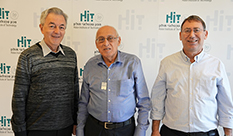שילוב חדשנות וטכנולוגיות מתקדמות בניהול פרוייקטים מורכבים
מר אורי אורחוף, מהנדס תעשייה וניהול העוסק בפרויקטים מעל 20 שנה. בעברו היה מהנדס המערכת הראשי של פרויקט ההפעלה של נתב"ג 2000, וכיום כיועץ עצמאי הוא מלווה פרויקטים תעופתיים, בטחוניים ותשתיתיים.
מושב ג' - אתגרים וחידושים בניהול פרוייקטים טכנולוגיים מורכבים
יו"ר המושב - ד"ר סיגל קורל-קורדובה, הפקולטה לניהול טכנולגיה, HIT, ראש מב"ט ניהול פרויקטים וסגנית נשיא לחינוך PMI ישראל.
יו"ר המושב - ד"ר סיגל קורל-קורדובה, הפקולטה לניהול טכנולגיה, HIT, ראש מב"ט ניהול פרויקטים וסגנית נשיא לחינוך PMI ישראל.
Structural contingency theory has been extended in recent years to the temporary organization level, namely, projects. Since many projects today involve innovation, this area of study is becoming an important part of theory development in projects, when both researchers and practitioners are realizing that "one size does not fit all.” This presentation is refining this line of investigation to the subproject level. It addresses the question of whether different approaches are also needed for a project’s building blocks (components), and if so, how this could be attained.
The presentation suggests that different components exhibit unique characteristics based on two major variables: Challenge—the difficulty to successfully complete the component, and vitality—the importance of the component to the final product’s success. A component is considered critical when its challenge and vitality are high. The presentation offers a conceptual framework to perform Critical Component Analysis (CCA), as a potentially new building block in project management research and planning.



